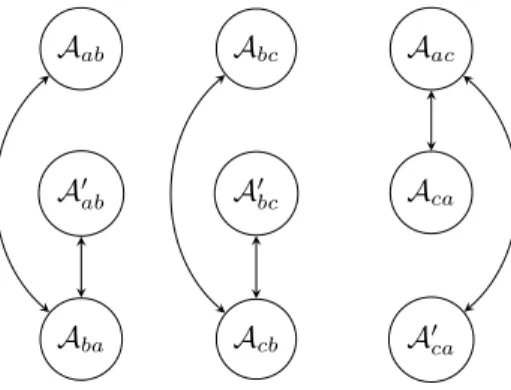A Decision-Making approach where Argumentation added value tackles Social Choice deficiencies
Texte intégral
Figure


Documents relatifs
[r]
A contribution measure takes as input an argumentation framework (an argumentation graph and a semantics, which evaluates the arguments of the graph), and assigns to each attack in
• The minimum number of allocation variables is unclear: for example, if the framework has two or three complete labelings, its general allocator can be constructed using one
Baroni and Giacomin [2007] show that grounded and p-grounded semantics sat- isfy strong admissibility and that complete, preferred, stable, semi-stable, ideal, p- complete,
Amgoud and Vesic [3] have pro- posed a new PAF which satisfies two requirements: conflict-freeness of extensions with respect to the attack relation (this is Principle 1 in
Moreover, audience specific value-based argumentation frameworks as defined by Bench-Capon may be seen as an equivalent representation as preference-based argumentation frameworks,
It is natural to expect that the overall support for an argument will decrease in pro- portion to the strength of its attacking arguments and the intensity with which these attacks
In this paper, we show that the "preference of the majority" is represen- tative in an analogous fashion of the individual preferences from which it emanates in the sense